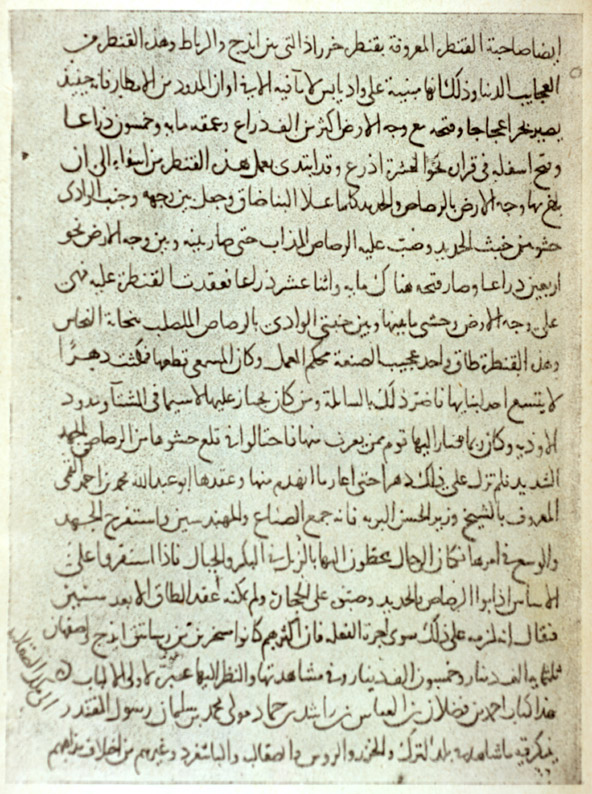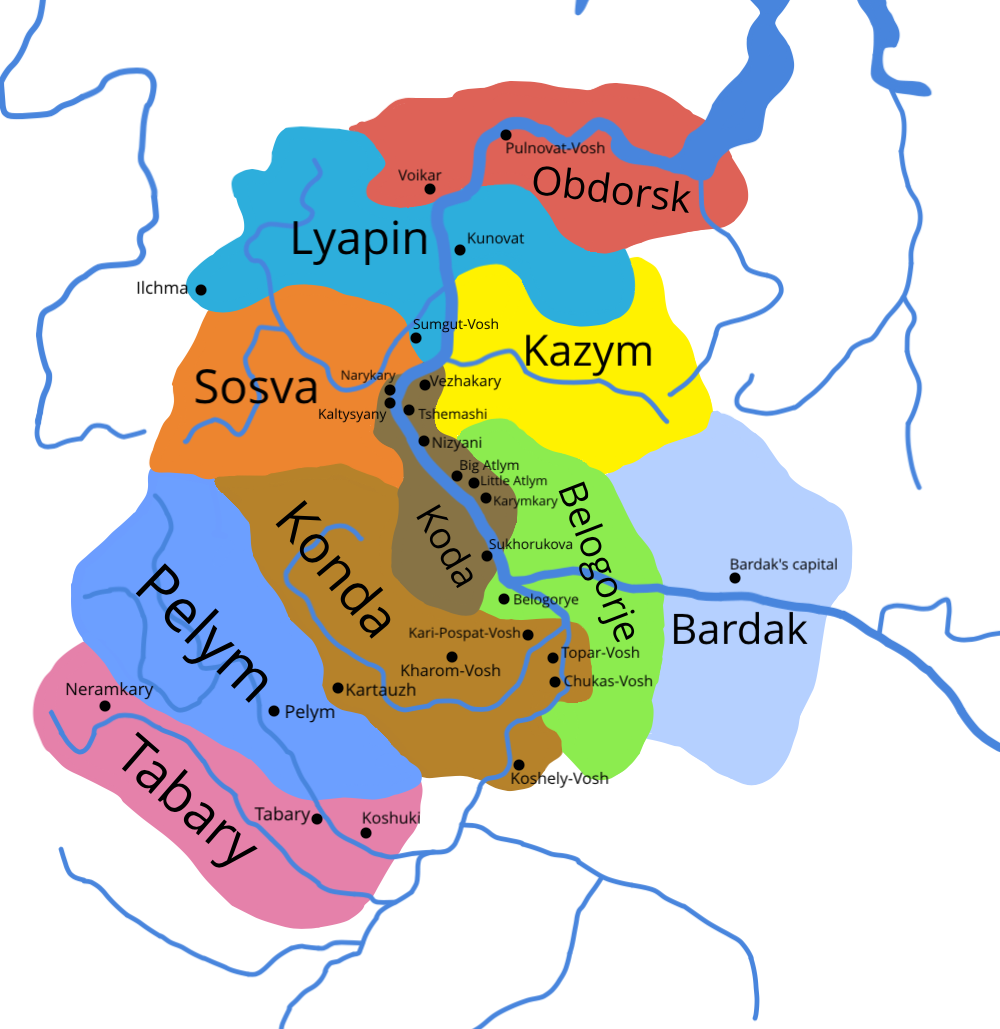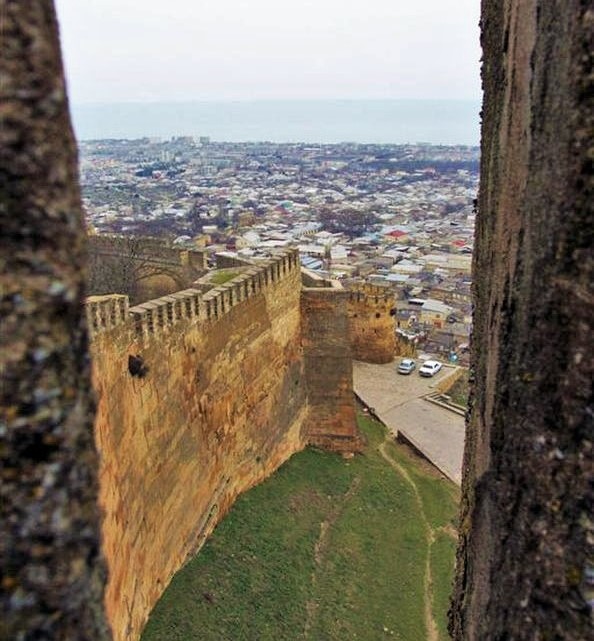|
Land Of Darkness
The Land of Darkness (Arabic: دياري الظلمات romanized: ''Diyārī Zulūmāt'') was a mythical land supposedly enshrouded in perpetual darkness. It was usually said to be in Abkhazia, and was officially known as Hanyson or Hamson (or some variation; the name apparently comes from the Hamshen area of Turkey), or simply the Forest of Abkhazia. The Land of Darkness enjoyed popularity in medieval travel literature such as the '' Alexander Romance'' and the ''Travels of Sir John Mandeville''. According to Mandeville, no one ventures into Hanyson out of fear, but the people in the surrounding area know it to be populated, as they can hear human voices inside. The residents of Hanyson are the descendants of Persian Emperor Saures (Shapur II) and his men, who were trapped there forever by a miracle of God. Saures had been persecuting his Christian subjects in Abkhazia, and had cornered them on a plain. They prayed to God, and God responded by surrounding the king's armies in ... [...More Info...] [...Related Items...] OR: [Wikipedia] [Google] [Baidu] |
Arabic
Arabic (, ' ; , ' or ) is a Semitic languages, Semitic language spoken primarily across the Arab world.Semitic languages: an international handbook / edited by Stefan Weninger; in collaboration with Geoffrey Khan, Michael P. Streck, Janet C. E.Watson; Walter de Gruyter GmbH & Co. KG, Berlin/Boston, 2011. Having emerged in the 1st century, it is named after the Arabs, Arab people; the term "Arab" was initially used to describe those living in the Arabian Peninsula, as perceived by geographers from ancient Greece. Since the 7th century, Arabic has been characterized by diglossia, with an opposition between a standard Prestige (sociolinguistics), prestige language—i.e., Literary Arabic: Modern Standard Arabic (MSA) or Classical Arabic—and diverse vernacular varieties, which serve as First language, mother tongues. Colloquial dialects vary significantly from MSA, impeding mutual intelligibility. MSA is only acquired through formal education and is not spoken natively. It is ... [...More Info...] [...Related Items...] OR: [Wikipedia] [Google] [Baidu] |
Qur'an
The Quran (, ; Standard Arabic: , Quranic Arabic: , , 'the recitation'), also romanized Qur'an or Koran, is the central religious text of Islam, believed by Muslims to be a revelation from God. It is organized in 114 chapters (pl.: , sing.: ), which consist of verses (pl.: , sing.: , cons.: ). In addition to its religious significance, it is widely regarded as the finest work in Arabic literature, and has significantly influenced the Arabic language. Muslims believe that the Quran was orally revealed by God to the final prophet, Muhammad, through the archangel Gabriel incrementally over a period of some 23 years, beginning in the month of Ramadan, when Muhammad was 40; and concluding in 632, the year of his death. Muslims regard the Quran as Muhammad's most important miracle; a proof of his prophethood; and the culmination of a series of divine messages starting with those revealed to Adam, including the Torah, the Psalms and the Gospel. The word ''Quran'' occurs so ... [...More Info...] [...Related Items...] OR: [Wikipedia] [Google] [Baidu] |
Dhul-Qarnayn
, ( ar, ذُو ٱلْقَرْنَيْن, Ḏū l-Qarnayn, ; "He of the Two Horns") appears in the Quran, Surah Al-Kahf (18), Ayahs 83–101 as one who travels to east and west and sets up a barrier between a certain people and Gog and Magog (called Ya'juj and Ma'juj). Elsewhere the Quran tells how the end of the world will be signaled by the release of Gog and Magog from behind the barrier. Other apocalyptic writings predict that their destruction by God in a single night will usher in the Day of Resurrection (''Yawm al-Qiyāmah)''. Early Muslim commentators and historians variously identified , most notably as Alexander the Great and as the South-Arabian Himyarite king al-Ṣaʿb bin Dhī Marāthid. Some modern scholars have argued that the origin of the Quranic story may be found in the '' Syriac Alexander Legend,'' but others disagree. Although some favor identification of with Cyrus the Great, the majority of modern scholars and commentators still prefer Alexander the ... [...More Info...] [...Related Items...] OR: [Wikipedia] [Google] [Baidu] |
Medieval Legends
In the history of Europe, the Middle Ages or medieval period lasted approximately from the late 5th to the late 15th centuries, similar to the post-classical period of global history. It began with the fall of the Western Roman Empire and transitioned into the Renaissance and the Age of Discovery. The Middle Ages is the middle period of the three traditional divisions of Western history: classical antiquity, the medieval period, and the modern period. The medieval period is itself subdivided into the Early, High, and Late Middle Ages. Population decline, counterurbanisation, the collapse of centralized authority, invasions, and mass migrations of tribes, which had begun in late antiquity, continued into the Early Middle Ages. The large-scale movements of the Migration Period, including various Germanic peoples, formed new kingdoms in what remained of the Western Roman Empire. In the 7th century, North Africa and the Middle East—most recently part of the Eastern Roman ... [...More Info...] [...Related Items...] OR: [Wikipedia] [Google] [Baidu] |
History Of Abkhazia
This article refers to the history of Abkhazia from its pre-historic settlement by the lower-paleolithic hunter-gatherers to the post-1992-1993 war situation. Prehistoric settlement Lower Paleolithic hunting-gathering encampments formed the first known settlements on the territory of modern-day Abkhazia. The earliest examples have been unearthed at the sites of Iashkhtva, Gumista, Kelasuri, and Ochamchire. Upper Paleolithic culture settled chiefly on the coastline. Mesolithic and Neolithic periods brought larger permanent settlements and marked the beginning of farming, animal husbandry, and the production of ceramics. The earliest artifacts of megalithic culture appeared in the early 3rd millennium BC and continued into the Bronze Age as the so-called dolmens of Abkhazia, typically consisting of four upright mass stones and a capstone, some of them weighing as much as 50 tonnes. A dolmen from the Eshera archaeological site is the best-studied prehistoric monument of t ... [...More Info...] [...Related Items...] OR: [Wikipedia] [Google] [Baidu] |
Ahmad Ibn Fadlan
Aḥmad ibn Faḍlān ibn al-ʿAbbās ibn Rāšid ibn Ḥammād, ( ar, أحمد بن فضلان بن العباس بن راشد بن حماد; ) commonly known as Ahmad ibn Fadlan, was a 10th-century Muslim traveler, famous for his account of his travels as a member of an embassy of the Abbasid caliph, al-Muqtadir of Baghdad, to the king of the Volga Bulgars, known as his ("account" or "journal"). His account is most notable for providing a detailed description of the Volga Vikings, including eyewitness accounts of life as part of a trade caravan and witnessing a ship burial. He also notably described the lifestyle of the Oghuz turks while the Khazaria, Cumans, and Pechnegs were still around. Ibn Fadlan's detailed writings have been cited by numerous historians. They have also inspired entertainment works, including Michael Crichton's novel ''Eaters of the Dead'' and its film adaptation ''The 13th Warrior''. Biography Background Ahmad ibn Fadlan was described as an Arab in c ... [...More Info...] [...Related Items...] OR: [Wikipedia] [Google] [Baidu] |
Ibn Battuta
Abu Abdullah Muhammad ibn Battutah (, ; 24 February 13041368/1369),; fully: ; Arabic: commonly known as Ibn Battuta, was a Berbers, Berber Maghrebi people, Maghrebi scholar and explorer who travelled extensively in the lands of Afro-Eurasia, largely in the Muslim world. He travelled more than any other explorer in pre-modern history, totalling around , surpassing Zheng He with about and Marco Polo with . Over a period of thirty years, Ibn Battuta visited most of southern Eurasia, including Central Asia, Southeast Asia, South Asia, China, and the Iberian Peninsula. Near the end of his life, he dictated an account of his journeys, titled ''A Gift to Those Who Contemplate the Wonders of Cities and the Marvels of Travelling'', but commonly known as ''The Rihla''. Name Ibn Battuta is a patronymic literally meaning "son of the duckling". His most common full name is given as Kunya (Arabic), Abu Abdullah (name), Abdullah Muhammad (name), Muhammad ibn Battuta. In his travel literat ... [...More Info...] [...Related Items...] OR: [Wikipedia] [Google] [Baidu] |
Yugra
Yugra or Iuhra (Old Russian Югра ''Jugra''; Byzantine Greek Οὔγγροι ''Oὔggroi''; la, Ongariae ) was a collective name for lands and peoples in the region to the east of the northern (modern north-west ), in the n annals of the 12th–17th centuries. During this period the region was inhabited by ... [...More Info...] [...Related Items...] OR: [Wikipedia] [Google] [Baidu] |
Volga Bulgaria
Volga Bulgaria or Volga–Kama Bulgaria, was a historic Bulgar state that existed between the 7th and 13th centuries around the confluence of the Volga and Kama River, in what is now European Russia. Volga Bulgaria was a multi-ethnic state with large numbers of Turkic Bulgars, a variety of Finnic and Ugric peoples, and many East Slavs. Its strategic position of allowed it to create a monopoly between the trade of Arabs, Norse and Avars. History Origin and creation of the state The Bulgars were Turkic tribes of Oghuric origin, who settled north of the Black Sea. During their westward migration across the Eurasian steppe, they came under the overlordship of the Khazars, leading other ethnic groups, including Finnic and Iranic peoples. In about 630 they founded Old Great Bulgaria, which was destroyed by the Khazars in 668. Kubrat's son and appointed heir, Batbayan Bezmer, moved from the Azov region in about AD 665, commanded by the Kazarig Khagan Kotrag, to whom he had ... [...More Info...] [...Related Items...] OR: [Wikipedia] [Google] [Baidu] |
Abu Hamid Al-Gharnati
Abu Hamid al-Gharnati (full name: Abu Hamid Muhammad ibn Abd al-Rahman ibn Sulayman ibn Rabi al-Māzinī al-Qaysi; c. 1080 – 1170) was an Andalusian traveller from Granada who travelled around eastern and central Europe, and wrote about his travels in an Arabic travelogue, ''Tuhfat al-Albab'' ("Gift of Hearts"). He also wrote about spectacular places and things in ''al''-''Mu’rib ‘an ba’d ‘aja’ib al-Maghreb'' (''Praise of Some of the Wonders of North Africa''), and established a genre of books of wonder in Arabic. Many of the things he saw and wrote about were embellished with fantastic details. Al-Gharnati's family is thought to have fled Granada to escape the reign of the Almoravid emir Yusuf ibn Tashfin. He travelled from Iberia to Egypt and Syria in 1106, reaching Alexandria in 1115 via Sardinia and Sicily, writing about Mount Etna. He moved to Baghdad in 1123. He lived with the Volga Bulgarians from 1131 to 1150 and travelled to Hungary, where he worked as an adviso ... [...More Info...] [...Related Items...] OR: [Wikipedia] [Google] [Baidu] |
Ural Mountains
The Ural Mountains ( ; rus, Ура́льские го́ры, r=Uralskiye gory, p=ʊˈralʲskʲɪjə ˈɡorɨ; ba, Урал тауҙары) or simply the Urals, are a mountain range that runs approximately from north to south through western Russia, from the coast of the Arctic Ocean to the river Ural and northwestern Kazakhstan.Ural Mountains Encyclopædia Britannica on-line The mountain range forms part of the conventional boundary between the regions of and |
Dhu Al-Qarnayn
, ( ar, ذُو ٱلْقَرْنَيْن, Ḏū l-Qarnayn, ; "He of the Two Horns") appears in the Quran, Surah Al-Kahf (18), Ayahs 83–101 as one who travels to east and west and sets up a barrier between a certain people and Gog and Magog (called Ya'juj and Ma'juj). Elsewhere the Quran tells how the end of the world will be signaled by the release of Gog and Magog from behind the barrier. Other apocalyptic writings predict that their destruction by God in a single night will usher in the Day of Resurrection (''Yawm al-Qiyāmah)''. Early Muslim commentators and historians variously identified , most notably as Alexander the Great and as the South-Arabian Himyarite king al-Ṣaʿb bin Dhī Marāthid. Some modern scholars have argued that the origin of the Quranic story may be found in the '' Syriac Alexander Legend,'' but others disagree. Although some favor identification of with Cyrus the Great, the majority of modern scholars and commentators still prefer Alexander t ... [...More Info...] [...Related Items...] OR: [Wikipedia] [Google] [Baidu] |









